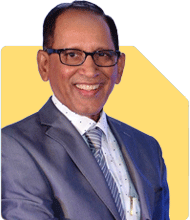Hello Sir, I am an NRi who will be relocating to India by the end of the year. I wont be working actively longer and will retire. My current corpus is 8.85 Cr out of which 7.50 cr is invested in FD's fetching me 4.50 lac monthly INR. I wish to have a monthly minimum of 4 lacs INR post taxes once I return . Please can you suggest where I should focus . My current age is 49 years,
Ans: Understanding Your Financial Goals and Current Position
Firstly, congratulations on reaching this milestone and planning ahead for your retirement. It's commendable that you've accumulated a substantial corpus of Rs 8.85 crore. You mentioned that Rs 7.50 crore is invested in Fixed Deposits (FDs), yielding Rs 4.50 lakh per month. This steady income is a great foundation, but we'll need to ensure it meets your post-tax requirement of Rs 4 lakh per month.
Assessing the Fixed Deposits Strategy
Fixed Deposits are a safe and reliable investment option. They provide assured returns and capital safety, which is crucial for retirement planning. However, there are some concerns:
Interest Rates: FD interest rates can fluctuate, impacting your returns. Currently, you're earning Rs 4.50 lakh per month, but rates could decrease in the future.
Taxation: Interest from FDs is fully taxable, reducing your effective post-tax income. This could challenge your goal of Rs 4 lakh monthly.
Given these factors, diversifying your investments could enhance returns and tax efficiency while maintaining stability.
Exploring Tax-Efficient Investment Options
Mutual Funds
Mutual funds can offer higher returns than FDs and provide tax efficiency. There are various types of mutual funds, each suited to different risk profiles and investment horizons:
Equity Mutual Funds: These invest in stocks and can deliver high returns, especially over the long term. They are tax-efficient, with long-term capital gains (LTCG) taxed at 10% beyond Rs 1 lakh.
Debt Mutual Funds: These invest in bonds and other fixed-income securities. They offer moderate returns and are more stable than equity funds. The tax on long-term capital gains (after 3 years) is 20% with indexation benefits, which can significantly reduce taxable gains.
Hybrid Funds: These funds invest in a mix of equity and debt, balancing risk and reward. They provide moderate returns with lower volatility than pure equity funds.
Systematic Withdrawal Plan (SWP)
A Systematic Withdrawal Plan (SWP) in mutual funds allows you to withdraw a fixed amount regularly. This can ensure a steady income while benefiting from potential capital appreciation. For instance, if you invest in a balanced hybrid fund, you can set up an SWP to withdraw Rs 4 lakh monthly. This can be more tax-efficient than withdrawing from FDs, as mutual funds enjoy favourable tax treatment.
Ensuring Adequate Emergency Funds
Maintaining an emergency fund is crucial, especially in retirement. This fund should cover 6-12 months of expenses, including unforeseen medical costs. Given your corpus, you might consider keeping around Rs 25-50 lakh in a liquid fund or savings account, ensuring quick access when needed.
Health Insurance and Life Insurance
Adequate health insurance is vital as medical costs can rise significantly with age. Ensure you have a comprehensive health insurance policy covering various ailments and hospitalization expenses.
If you hold any traditional life insurance policies (such as LIC policies or ULIPs), assess their returns and benefits. Often, these policies offer lower returns compared to mutual funds. Surrendering these policies and reinvesting the proceeds in mutual funds could be beneficial. Discuss this with your Certified Financial Planner to evaluate the best course of action.
Creating a Diversified Portfolio
Equity Allocation
While you may have a conservative risk profile, allocating a portion of your corpus to equity is essential for growth. Consider allocating 30-40% of your investments in diversified equity mutual funds. These funds can provide inflation-beating returns and grow your corpus over time.
Debt Allocation
Debt funds provide stability and regular income. Allocate around 50-60% of your corpus to various debt instruments like debt mutual funds, government bonds, and high-rated corporate bonds. These investments offer safety and moderate returns, balancing your portfolio's overall risk.
Hybrid Funds
Hybrid funds can bridge the gap between equity and debt. Allocate 10-20% of your corpus to hybrid funds, providing a balanced risk-return profile.
Monitoring and Rebalancing Your Portfolio
Regularly monitoring and rebalancing your portfolio is crucial to ensure it remains aligned with your goals and risk tolerance. Work with your Certified Financial Planner to review your investments annually. This helps in making necessary adjustments based on market conditions and personal circumstances.
Additional Considerations for NRIs
Taxation Rules
As an NRI, understand the tax implications on your investments in India. Interest from FDs, mutual fund gains, and other income sources are subject to Indian tax laws. Collaborate with a tax advisor to ensure compliance and optimize your tax liability.
Repatriation of Funds
Ensure that the investments you choose allow easy repatriation of funds, especially if you plan to move funds back to your home country in the future. Understand the RBI guidelines and ensure all necessary paperwork is in place.
Relocating and transitioning to retirement can be both exciting and challenging. It's natural to have concerns about maintaining your lifestyle and ensuring financial security. Rest assured, with a well-thought-out plan and professional guidance, you can achieve your financial goals and enjoy a comfortable retirement in India.
Your foresight in accumulating a substantial corpus and planning for retirement is commendable. Taking proactive steps to secure your financial future demonstrates prudence and responsibility. Trust in your ability to make informed decisions, and continue seeking professional advice to navigate this new phase of life.
Final Steps and Implementation
To summarize, here's a step-by-step action plan:
Evaluate Current FDs: Assess interest rates and tax implications. Consider retaining a portion for stability.
Diversify Investments: Allocate funds to equity, debt, and hybrid mutual funds for growth and stability.
Set Up SWP: Establish a Systematic Withdrawal Plan to ensure a steady, tax-efficient income stream.
Maintain Emergency Funds: Keep 6-12 months of expenses in a liquid fund for emergencies.
Review Insurance: Ensure adequate health insurance and reassess life insurance policies. Consider surrendering underperforming policies.
Monitor Portfolio: Regularly review and rebalance your portfolio with your Certified Financial Planner.
Understand Tax Rules: Stay informed about NRI taxation and repatriation guidelines.
By following this comprehensive approach, you can achieve financial security and enjoy a fulfilling retirement in India.
Best Regards,
K. Ramalingam, MBA, CFP,
Chief Financial Planner,
www.holisticinvestment.in





























